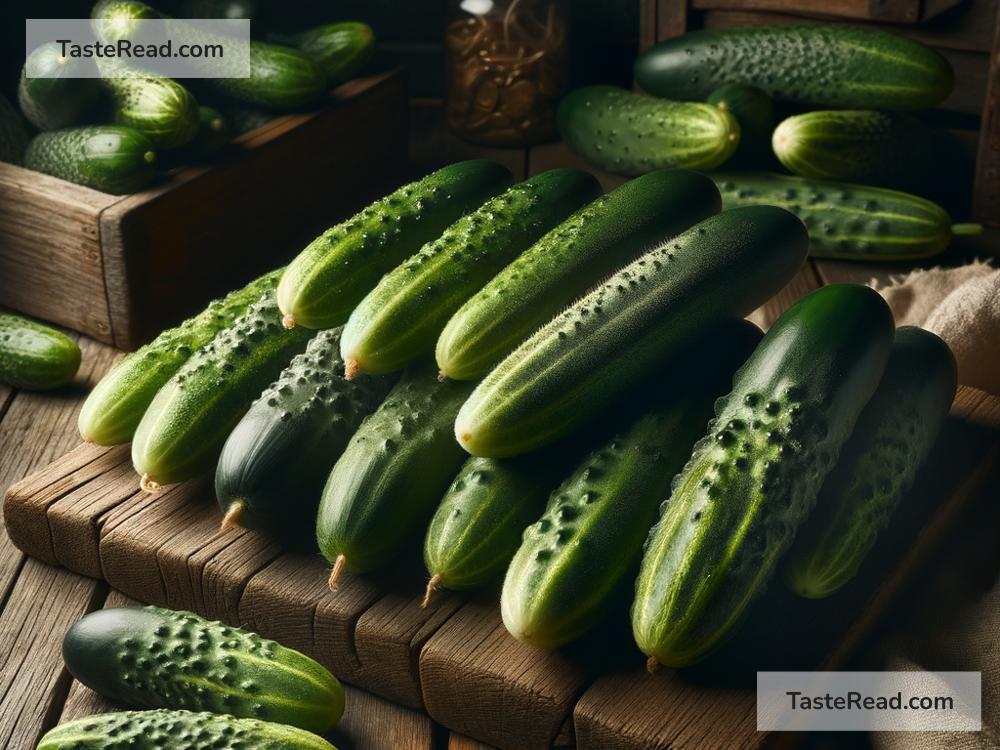Why Cucumbers Have Different Shapes and Sizes
Cucumbers are one of the most popular vegetables enjoyed around the world. You can slice them to put in salads, blend them into smoothies, or even pickle them to make crunchy snacks! Have you ever wondered why cucumbers come in so many shapes and sizes? Some cucumbers are long and skinny, while others are short and round. Some look perfectly smooth, while others might have bumps or curves.
In this blog, we’re going to explore the reasons why cucumbers grow differently. It turns out that there’s more going on than meets the eye! By the end of this article, you’ll have a better understanding of why cucumbers are unique—and why you shouldn’t judge a cucumber by its shape.
1. Different Varieties of Cucumbers
One of the biggest reasons cucumbers don’t all look the same is because there are many kinds, or varieties, of cucumbers! Farmers and gardeners grow different types of cucumbers depending on what they need. For example, you’ve probably seen long, seedless cucumbers in the grocery store—these are often called “English cucumbers” or “European cucumbers.” They’re smooth and slender, perfect for slicing.
On the other hand, there are smaller, thicker cucumbers called “pickle cucumbers” or “gherkins.” These are meant for pickling because they hold their texture better after being soaked in brine. Some cucumber varieties naturally have bumpy skin, such as “Japanese cucumbers,” while others are rounder, like the heirloom variety called “Lemon cucumber.”
Just like apples or tomatoes, cucumbers come in many different shapes because farmers grow specific types for specific uses and preferences.
2. The Role of Genetics
Cucumber shape and size also depend on its genetic makeup. Just like humans inherit traits like eye color or height from their parents, cucumbers inherit their shape and size from the seeds they come from. If you plant seeds from a variety bred to grow long cucumbers, your crops will likely turn out long. On the other hand, seeds from a round cucumber variety will produce round cucumbers.
Through the process of breeding, farmers and scientists have been able to create cucumbers with specific traits. For example, some cucumbers have been bred to grow straighter for easier packaging, while others have been designed to withstand hot weather better. Genetics play a big role in determining a cucumber’s appearance.
3. Growing Conditions Make a Difference
While genetics set the blueprint for a cucumber’s potential shape and size, the environment where the cucumber grows also has a huge impact. Cucumbers are picky plants and need the right amount of water, sunlight, space, and nutrients to grow properly. If the growing conditions aren’t perfect, cucumbers may grow smaller or develop odd shapes.
Here are a few common environmental factors that can affect the shape and size of cucumbers:
-
Water Levels: Cucumbers are thirsty plants, but too much or too little water can create problems. If a cucumber doesn’t get enough water, it might become stunted and not grow to its full size. On the other hand, uneven watering can sometimes cause cucumbers to grow with curves or bumps.
-
Sunlight: Cucumbers love sunlight! If they don’t get enough light, their growth may slow down, leading to smaller cucumbers. Too much sunlight, though, can stress the plant.
-
Nutrient Deficiency: Cucumbers need nutrients like potassium and nitrogen to fuel their growth. Plants that don’t get enough nutrients may grow underdeveloped cucumbers.
-
Pollination Issues: Cucumbers grow from flowers that need to be pollinated, usually by bees or other insects. If pollination isn’t successful, cucumbers may end up growing unevenly.
Sometimes, even small changes in weather—like a sudden cold snap or heatwave—can impact how cucumbers grow. Gardeners often say that misshapen cucumbers are “nature’s surprises” because you never know exactly how the environment will affect your crops!
4. Space and Crowding
Another reason cucumbers come in different shapes is how they’re spaced when grown. If cucumber plants are too crowded, their fruits might end up twisted or oddly shaped because there’s not enough room for them to grow properly. Cucumbers need space for their vines to spread out and their fruits to develop in a healthy way. Gardeners carefully plan how they plant cucumbers to avoid overcrowding.
5. Harvest Timing
The time when cucumbers are picked can also change their appearance. If cucumbers are left on the vine too long, they may grow larger but lose their crisp texture. On the other hand, if they’re picked too early, they might be smaller than expected.
Final Thoughts
Cucumbers have different shapes and sizes because of a combination of factors, including their variety, genetics, growing conditions, space, and harvesting time. While a perfectly straight cucumber might catch your eye at the store, misshapen cucumbers are just as delicious and nutritious! In fact, crooked or bumpy cucumbers are often used in cooking and pickling because their taste is no different from smooth cucumbers.
Next time you see cucumbers of all shapes and sizes, remember that their diversity is what makes them special. Whether they’re long or short, straight or curved, cucumbers are proof that nature has its own way of creating beauty!


